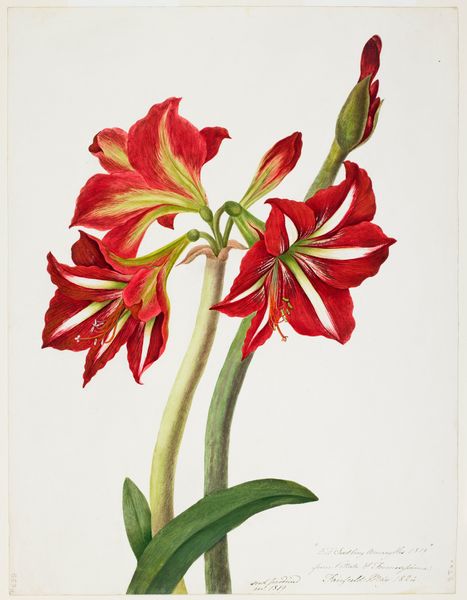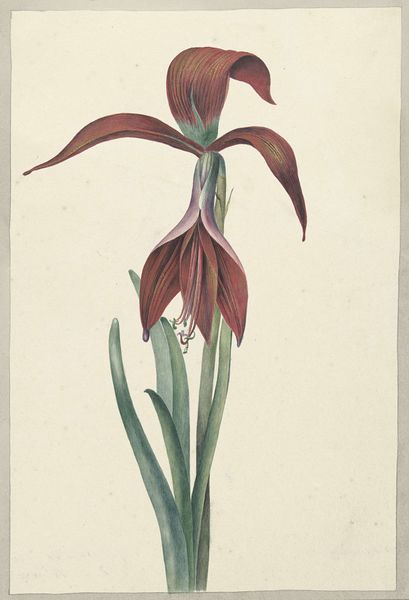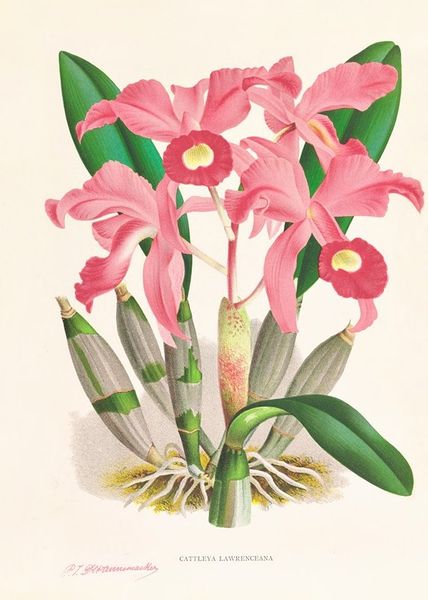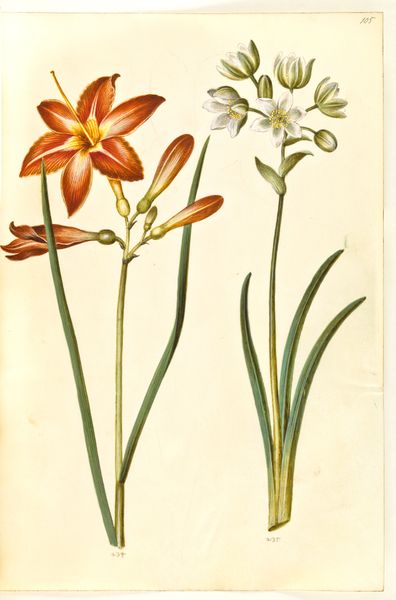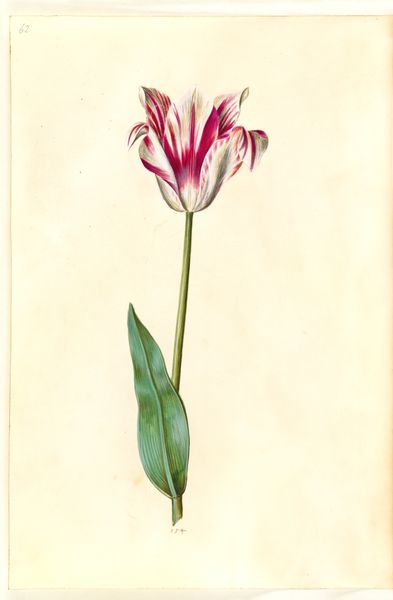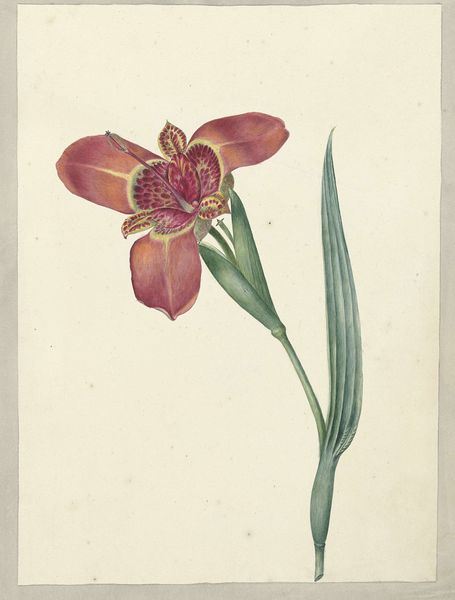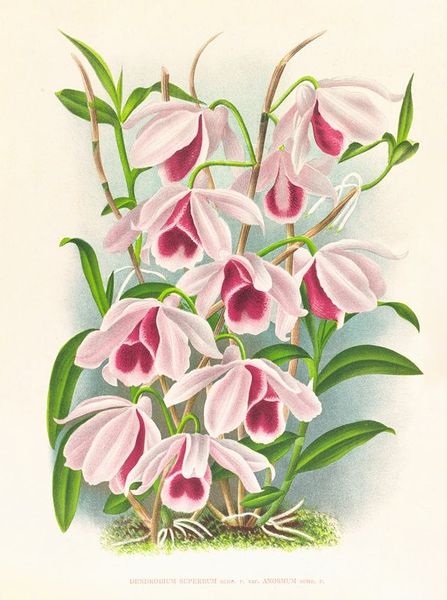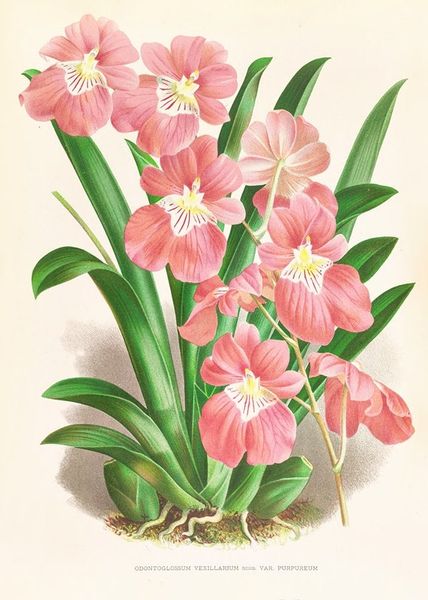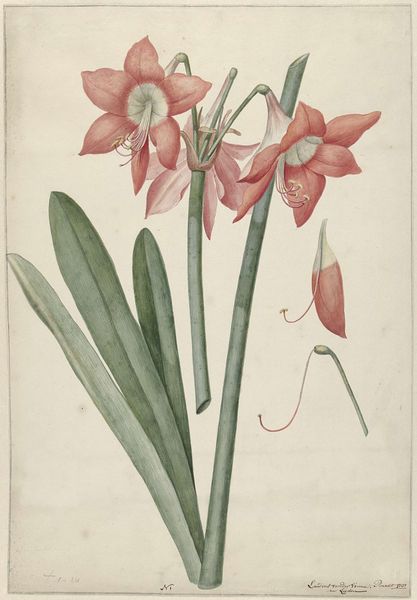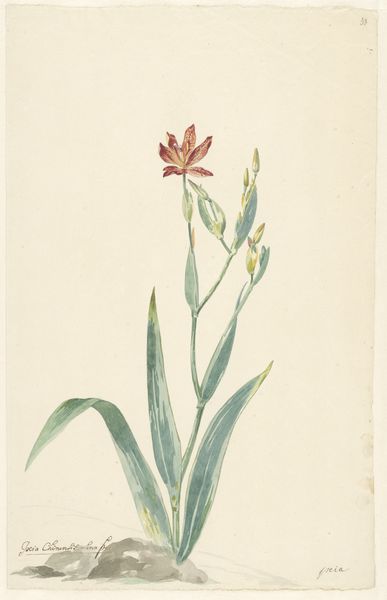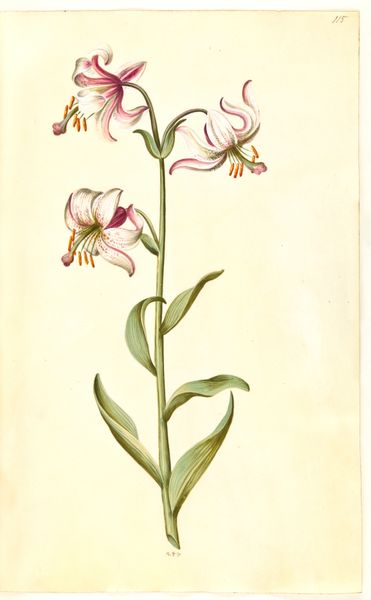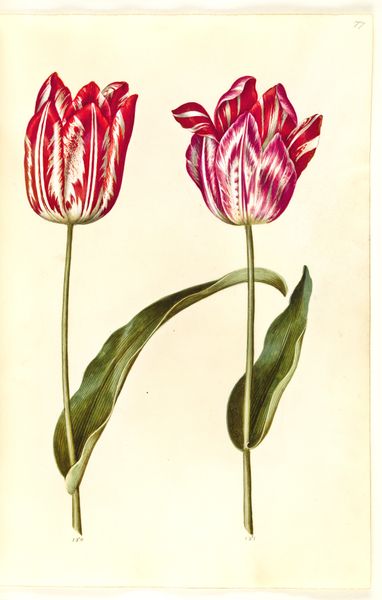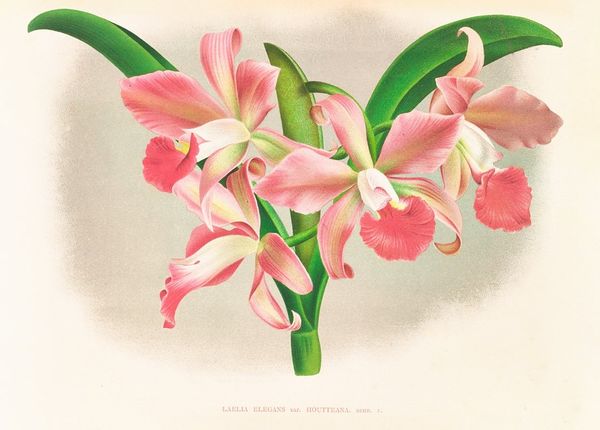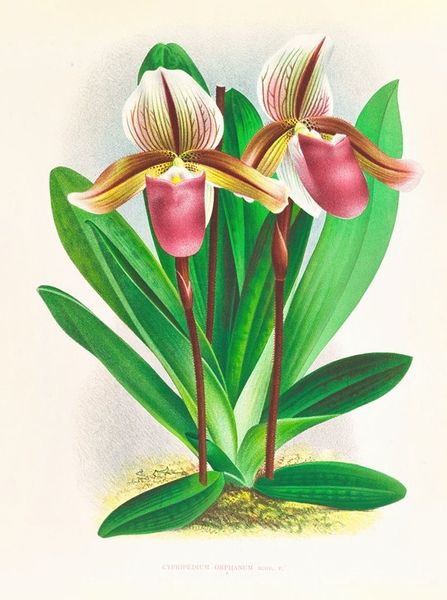
print, watercolor
# print
#
watercolor
#
green background
#
watercolor
Dimensions: 20 1/2 x 14 1/4 in. (52.07 x 36.2 cm) (plate)
Copyright: Public Domain
Editor: We are looking at "Amaryllis brasiliensis", or Brazilian Amaryllis, an 1816 watercolor and print piece housed here at the Minneapolis Institute of Art. There’s something very poised and precise about it. What symbolism can you extract from a piece like this? Curator: Well, first, note the almost clinical detail – each vein, each curve of the petal is rendered with exacting precision. To me, that recalls the tradition of botanical illustration which flourished in the 18th and 19th centuries. Editor: So, accuracy was prized above all? Curator: Not quite "above all," but think of it as a way to grasp and categorize the natural world during a period of intense colonial exploration and scientific discovery. The Amaryllis, being native to Brazil, becomes a symbol of exotic allure. Does this not, in a sense, capture and contain a part of that 'untamed' world for European viewers? Editor: Interesting, the flower as a symbol of taming the unknown... But I thought that flowers also symbolised fertility. Curator: Yes, the flower is a vessel and metaphor that carries diverse, sometimes even contradictory meanings. Fertility is certainly one facet; the colour too evokes vitality and passion. Think of the continuity and layering, linking cultural memory with psychological and anthropological insight, revealing much about historical consciousness and scientific ambition of that time. Editor: I guess I never really considered scientific ambition and art being linked so closely. This was much more insightful than just seeing a flower painting! Curator: Precisely, it enriches our understanding when we begin to discern their visual language, transforming how we look at art from this era.
Comments
minneapolisinstituteofart almost 2 years ago
⋮
Botanical illustrators working in the fifteenth and sixteenth centuries devoted themselves to the medicinal qualities of plants and sought to render plant structure and function as precisely as they could. Later, European explorers brought specimens back from exotic locales, and artists carefully reproduced them for an audience fascinated by new discoveries. By the eighteenth and nineteenth centuries, artists had shifted their emphasis from scientific illustration to the innate beauty of the plant or flower. The Minneapolis Institute of Arts is fortunate to possess an impressive collection of more than 2,000 botanical prints and drawings.
Join the conversation
Join millions of artists and users on Artera today and experience the ultimate creative platform.
